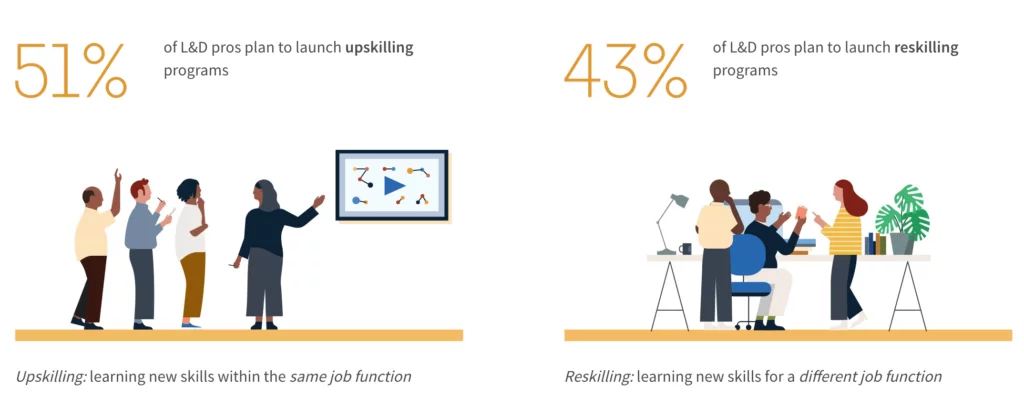COVID-19 threw the world into a tailspin, and many companies and individuals are still reeling in shock. With some countries loosening social distancing rules, we are now preparing for a post-Corona world, the next normal. HR managers and personnel have seen their roles transformed and catapulted into the limelight during this crisis.
Furloughs, layoffs, industry disruption, and general unknowns are still on the rise. HR has needed to flex its muscles to deal with the new working from home reality and ensure that employees feel safe and supported.
Technology is proving to be the life-jacket to ride this rocky wave. Digitally-enabled companies who know how to leverage their tech-stack have a better shot at business continuity and optimizing the work from home experience for their employees.
Read on as we explore what’s in store for HR professionals as we all bravely step into the unchartered territory of the next normal.
Remote work is here to stay
As of late March, Gartner reported that 88% of organizations have encouraged or required employees to work from home. This week, Twitter announced that they will allow their employees to work from home “forever.”
Remote work has been on the rise for the past couple of years. But now that companies have forcibly gotten a taste of what it means, many will begin to adopt a more flexible workspace policy.
In most organizations when COVID-19 struck, there was a frantic reshuffle to accommodate employees working from home, with a concerted effort between management, IT, and HR. We are now witnessing a monumental shift in the traditional workplace as we know it.
Moving to increased remote work is a game-changer for HR. It will drastically transform company norms and the measurement of employee standards and performance. With more employees working outside of the office, performance will be measured by output and tangible results. Physical presence as a productivity measurement will hold less weight, if any.
Employee wellbeing isn’t just a catchphrase
When COVID-19 first struck and WalkMe initiated working from home, I received a call from an unknown number. The voice on the line was my department’s HR rep reaching out to check how I was doing. Truth be told I didn’t have much contact with her before, but the following week, I received a Zoom meeting invite from her. She extended herself to see if she could do anything to help me ease into this transition. That simple gesture made me feel seen and supported during a rocky time.
HR’s focus on wellbeing has taken on new meaning. As employees deal with the unforeseen challenges of working from home and the anxiety a global pandemic causes, HR personnel are taking the lead.

Credit: LinkedIn Global Talent Trends 2020
Led by Accenture’s CHRO Ellyn Shook, the company launched a program with Thrive Global, a behavior change platform aimed at employee wellbeing, to provide programming to employees to deal with anxiety, stress, and loneliness.
HR will, if it’s not already, be more attuned to their dispersed workforce. Companies will experience a ripple effect of awareness as HR train managers on how to manage remotely, with a focus on employee wellbeing. Weekly or daily syncs will now have to include an inquiry into an employees’ personal state of mind.
As time goes on and with HR’s leadership, managers will be keyed into their employees, developing a more empathetic and in sync working relationship with their teams.
Training, reskilling and upskilling
Ongoing training for employees was already a growing need before COVID-19. Companies today cannot rely on in-person classroom sessions or for colleagues to tap their deskmate on the shoulder with a training-related question.
Training software is necessary to keep employees up-to-date, and onboard them to new systems, processes, or procedures. As stated earlier, digitally-enabled companies will fare better if they have the right tools to train and manage their teams.

Credit: LinkedIn’s 2020 Workplace Learning Report
As the needs of organizations shift, employees’ roles might as well. Employee development plans will include reskilling to teach workers new skills for a different job function and upskilling to make sure an employee has the proper knowledge to perform their current job.
HR must pave the way for securing effective training software for their companies. Implementing training software will streamline learning, enhance organizational alignment, and empower employees to do their jobs even better.
HR’s new seat at the table
As the future of work becomes newly defined, HR will have an even bigger role within companies. They will take on the wellbeing of a remote workforce and will need to make sure employees have all the tools they need to succeed. Performance benchmarks will change and HR will have to push organizations to implement training software that will strengthen their companies as a whole and empower employees.
There are many unknowns ahead, and companies will experience dramatic shifts in the near future. But with HR at the helm, employee experience will be kept at the forefront.


